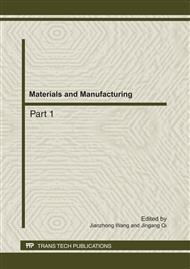p.1128
p.1132
p.1136
p.1142
p.1146
p.1151
p.1157
p.1161
p.1167
Effect of Shoulder Diameter on the Resulting Interfacial Regions of Friction Stir Welds between Aluminium and Copper
Abstract:
This paper reports the effect of shoulder diameter on the resulting interfacial regions of joints between aluminium and copper produced by the friction stir welding process. The welds were produced using three shoulder diameter tools, viz; 15, 18 and 25 mm. This paper focuses on welds produced at a constant rotational speed of 600 rpm and feed rate of 50 mm/min varying the shoulder diameters. Analysis of the force feedback revealed that the advancing force, the downward vertical force and the torque increases as the shoulder diameter increases. Microstructural characterization was conducted on the joint interfaces and it was observed that the widths of the interfacial regions comprising of the Stir Zone and the Thermo – Mechanically Affected Zone (TMAZ) increases as the shoulder size increases.
Info:
Periodical:
Pages:
1146-1150
Citation:
Online since:
July 2011
Authors:
Keywords:
Price:
Сopyright:
© 2011 Trans Tech Publications Ltd. All Rights Reserved
Share:
Citation:


